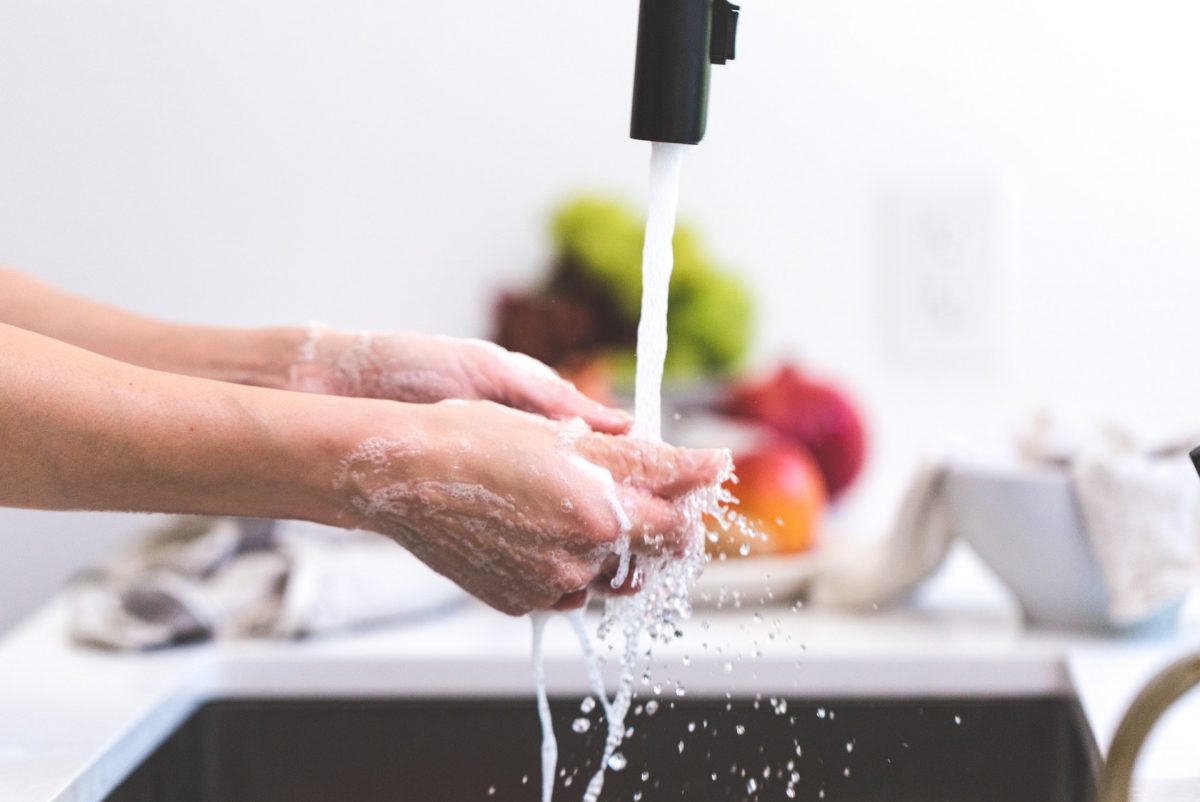
Food and COVID-19: What do we know?
Dr. Claudia Narvaez, Department of Food and Human Nutritional Sciences, shared this op-ed on food safety and COVID-19.
Food and COVID-19: What do we know?
We are living in stressful times, dealing with a pandemic caused by a novel coronavirus COVID-19. Information is now flooding social media and newspapers, some of this information authored by people with little or no knowledge in the area and therefore causing confusion and unnecessary anxiety and stress.
I am a scientist and I would like to provide some science-based information on COVID-19. So, what do we know so far about this virus? To date, we know that COVID-19 is a novel virus whose genome sequencing shows 96.2% overall genome sequence identity with Bat CoV RaTG13, suggesting that likely the virus originated from bats via an unknown intermediate host [1]. Transmission of COVID-19 occurs mainly through person-to-person contact and primarily spreads through the respiratory tract by droplets, respiratory secretions and direct contact. The virus has been isolated from surfaces, saliva, blood, urine and gastrointestinal tract [2].
Confirmed modes of transmission include contact with contaminated environmental surfaces and aerosolization (as small particles through the air). COVID-19 can survive on a variety of materials such as plastic (viable for 72 hours), stainless steel (viable for 48 hours) and cardboard (viable for 8 hours). It can also remain viable in aerosols for at least 3 hours [3]. These findings are suggesting that the virus can use multiple routes of transmission.
Research has also been conducted to figure out how to inactivate COVID-19 on inanimate surfaces. It has been reported that the virus can be efficiently inactivated with surface disinfection procedures with 62-71% ethanol, 0.5% hydrogen peroxide or 0.1% sodium hypochlorite within 1 minute [4]. To decrease human-to-human transmission it is essential to wear masks and to exercise personal hygiene such as frequent handwashing and social distancing.
One question many people are asking is the role of food and COVID-19 transmission. To accurately assess the risk related to food as a potential vehicle for COVID-19, more scientific information is needed. Nevertheless, with the information we have available, and being on the prudent side, the food should be safe as long as the people handling the food are following personal hygiene procedures and following sanitation protocols in food processing facilities.
These procedures are not new to the food industry. Food processors are already familiar with these practices and are following food safety procedures, and personal hygiene is part of the Good Manufacturing Practices (GMP). The food industry has food quality and safety programs such as sanitization operating procedures, GMP, and Hazard Analysis and Critical Control Points. Workers are fully trained on these procedures.
For example, when working in the food processing lines, employees regularly wear personal protective equipment, and in the majority of food operations for ready-to-eat food products they are using gloves and masks. Workers also must report if they are sick, so they are excused from work. In food processing plants, partially or fully automated, human contact with food is minimal.
In the current situation, where the world is facing such challenges, food security and food safety are fundamental. The Canadian government, the food industry, food suppliers, farmers and distributors are also taking preventive measures related to COVID-19 to make sure food supply is safe as well as their workers.
My opinion as a food microbiologist and food safety expert is that food should be considered low risk for COVID-19 transmission. However, there is always a risk associated with it, as long as humans are part of the equation. Therefore, if you feel that you need more reassurance, my advice will be that if you are ordering home delivery (Amazon, etc.) or food (pizza, etc), wipe/spread the surface of the container with ethanol or hydrogen peroxide. Wash your hands before retrieving the merchandise/food item. Dispose of the container, wash your hands and clean the surfaces that the vessel was in contact with, and wash your hands again. The person handling your order should be following personal hygiene procedures as well, therefore minimizing the risk. To this point, there is no scientific evidence connecting food with COVID-19.
If you go to the grocery store, try not to touch anything that you are not intending to purchase. Practice social distancing from others by staying apart two metres (six feet) and wash your hands when you return home. Stay home if you are not feeling well or are at high risk, and have others deliver groceries to your doorstep. And follow the steps above to clean surfaces of products and wash all fresh produce. Today more than ever, we must be considerate and think about others. We should do all we can to reduce the spread of COVID-19.
- Zhou, P., et al., A pneumonia outbreak associated with a new coronavirus of probable bat origin. Nature, 2020. 579(7798): p. 270-273.
- Wang, L.S., et al., A review of the 2019 Novel Coronavirus (COVID-19) based on current evidence. Int J Antimicrob Agents, 2020: p. 105948.
- van Doremalen, N., et al., Aerosol and Surface Stability of SARS-CoV-2 as Compared with SARS-CoV-1. N Engl J Med, 2020.
- Kampf, G., et al., Persistence of coronaviruses on inanimate surfaces and their inactivation with biocidal agents. J Hosp Infect, 2020. 104(3): p. 246-251.






